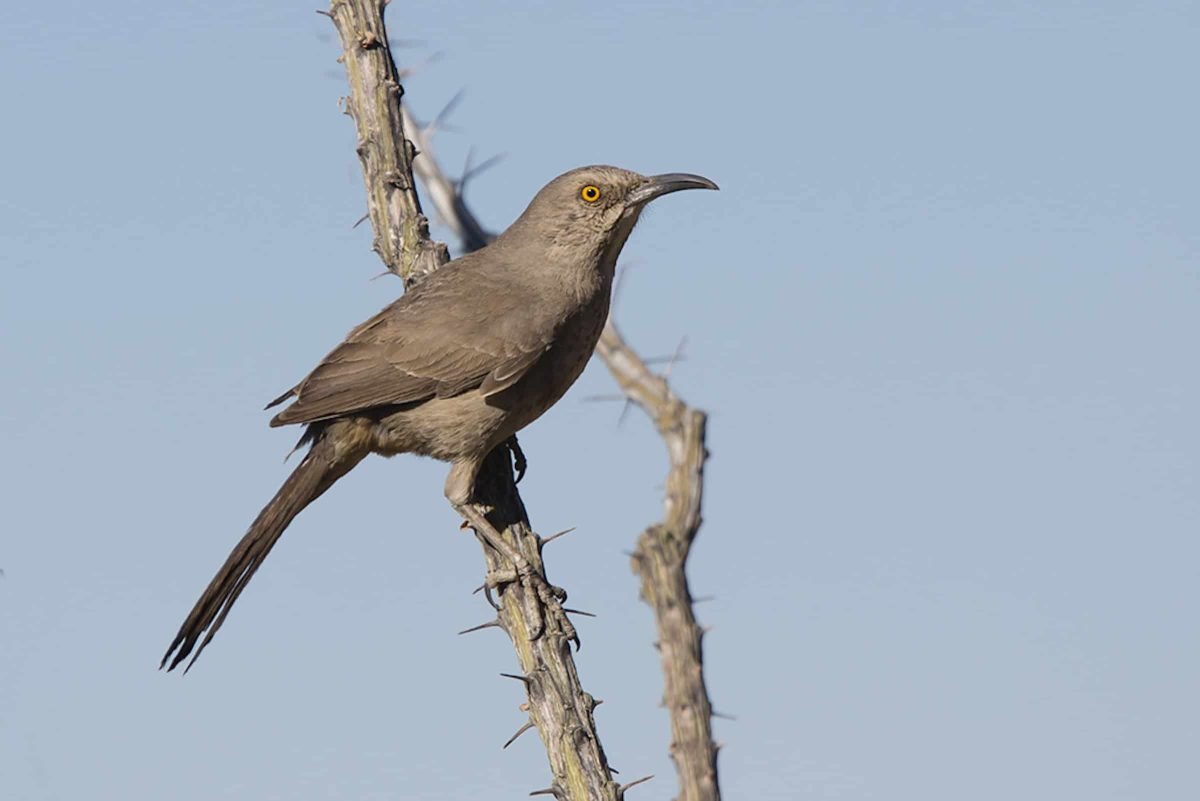American Kestrels are year round residents at Sabino Canyon. American Kestrels are our smallest (9 inches long with a …
Birds
Birds (class Aves or clade Avialae) are feathered, winged, two-legged, warm-blooded, egg-laying vertebrates. Aves ranks as the tetrapod class with the most living species, approximately ten thousand. Extant birds belong to the subclass Neornithes, living worldwide and ranging in size from the 2" Bee Hummingbird to the 9' Ostrich. The fossil record indicates that birds emerged within the theropod dinosaurs during the Jurassic period, around 150 million years ago. Most researchers agree that modern-day birds are the only living members of the Dinosauria clade.
Modern birds are characterized by feathers, a beak with no teeth, the laying of hard-shelled eggs, a high metabolic rate, a four-chambered heart, and a lightweight but strong skeleton. Extant birds have wings. Wings are evolved forelimbs, and most bird species can fly. Birds also have digestive and respiratory systems that are uniquely adapted for flight.
Many species annually migrate great distances, and many more perform shorter irregular movements. Birds are social, communicating with visual signals, calls, and songs, and participating in such social behaviors as cooperative breeding and hunting, flocking, and mobbing of predators. The vast majority of bird species are socially monogamous, usually for one breeding season at a time, sometimes for years, but rarely for life. Other species have polygynous (“many females”) or, rarely, polyandrous (“many males”) breeding systems. Eggs are usually laid in a nest and incubated by the parents. Most birds have an extended period of parental care after hatching.
Black-Throated Sparrow
As desert dwellers, they have adapted to drought conditions and can obtain all the water they require from their …
Cactus Wren
Cactus Wrens are the largest wren in North America and are the state bird of Arizona Cactus Wrens are about 8 inches …
Cedar Waxwing
Cedar Waxwings are social birds that are most always seen in flocks.Cedar Waxwings are medium sized songbirds that are …
Common Raven
Ravens are very intelligent. They are among the very few species that can study a problem and figure out a solution …
Cooper’s Hawk
The stair-step pattern to the under-tail is caused by the different lengths of the tail feathers which confirms that it …
Curve-Billed Thrasher
The call of the Curve-billed Thrasher is a loud, human-like whistle —Whit-Wheet — one of the most common bird calls …
Elegant Trogon
Prior to 2018, the last documented sighting at Sabino Canyon was in 2002 Only one species of trogon occurs in North …
Gambel’s Quail
The eggs are laid over several days but the female does not begin sitting on the eggs until they all are laid, thus …
Gila Woodpecker
They excavate a cavity usually in the middle third of the saguaro. Gila Woodpeckers are medium size woodpeckers (9 …
Gilded Flicker
They are capable of extending their tongue fully five inches outside the bill to probe deeply into anthills. Gilded …
Gray Hawk
Both adults participate in the nest building with the male bringing in most of the dead sticks and the female shaping …
Great Horned Owl
They have excellent hearing and eyesight and swoop down from a high perch to capture their prey. Great Horned Owls are …
Greater Roadrunner
One of the best ways to locate a roadrunner is to listen for the unique sound they produce by clattering their mandibles …
Harris’s Hawk
Harris’s Hawks will hunt cooperatively, lead by an alpha female, to flush, intercept and corner prey. Harris’s Hawks …
Ladder-Backed Woodpecker
A woodpecker’s head endures deceleration at 1,000 times the force of gravity with each strike and can drum 8 - 12,000 …
Loggerhead Shrike
Loggerhead Shrikes make a habit of impaling dead quarry on thorns or barbed wire, the way a butcher hangs meat. The …
Northern Cardinal
Arizona is one of only three western states that hosts this bird. Most people are familiar with the flashy northern …
Peregrine Falcon
Peregrine Falcon are one of the fastest and strongest birds in the world, achieving speeds of over 200 mph in a stoop …
Phainopepla
Their winter diet is primarily desert mistletoe berries and they are known to eat over 1100 berries per day. The …
Prairie Falcon
Powered flight is rapid and direct with moderately fast, shallow, stiff wingbeats. Prairie Falcons are large pale …
Pyrrhuloxia
Both Pyrrhuloxias and Cardinals breed at Sabino, their territories may overlap, and no conflicts between the two species …
Red-Tailed Hawk
In flight, Red- tailed Hawks show dark marks on the leading edge of the wing adjacent to the body. These “patagial …
Swainson’s Hawk
They frequently migrate in large flocks called "kettles" by hawkwatchers. Swainson's Hawks are large buteos, similar …
Verdin
Verdins also build nests to sleep in at night Verdins are tiny active birds that are year-round residents of Sabino …
Vermilion Flycatcher
During the breeding seasons, male Vermillion Flycatchers perform a dramatic flight display above the tree canopy, …
Violet-Crowned Hummingbird
When it appeared in Sabino Canyon above the dam, it instantly become a magnet for birders all over Tucson I first …
Western Bluebird
They often compete with other birds such as Phainopepla for desert fruit such as mistletoe berries. The Western …
Western Screech-Owl
They do not migrate. They live on the edges of wooded areas, in the desert and within urban areas. These small grey …
Western Tanager
During breeding season the male sports a vivid orange-red head due to the presence of rhodoxanthin, a pigment acquired …






























